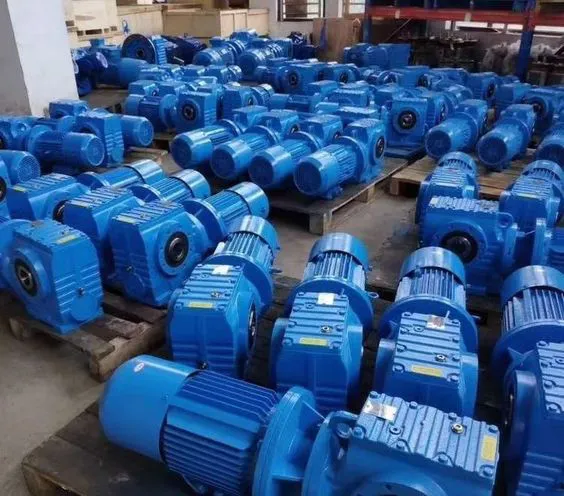In the vast world of industrial machinery, gearboxes play a pivotal role in operational efficiency, acting as the linchpin in the power transmission process. These mechanical devices adjust the speed, torque, and direction of the motor's power to the machinery, ensuring optimal performance. However, gearboxes, like all mechanical components, are susceptible to wear and tear, necessitating periodic repairs. This guide offers an in-depth look at the process of industrial gearbox repair, from initial diagnosis to post-repair maintenance, ensuring your gearbox operates at peak efficiency.
Understanding Industrial Gearboxes
The Backbone of Industry
Gearboxes are the heart of industrial machinery, crucial for applications ranging from manufacturing lines to heavy equipment. By modifying the motor's output, gearboxes ensure that machinery operates within its optimal performance range, thus conserving energy and extending equipment lifespan.
Types of Industrial Gearboxes
- Helical Gearboxes: Characterized by their cylindrical gears, which are cut at angles, helical gearboxes are adept at handling high torque levels and offer smooth operation.
- Bevel Gearboxes: These gearboxes facilitate a change in the drive's direction, making them ideal for equipment requiring angular movement.
- Worm Gearboxes: With a screw-like worm meshing with a gear, these units provide high gear ratios, making them perfect for applications requiring significant speed reduction.
Signs Your Gearbox Needs Repair
Timely recognition of gearbox issues can prevent costly downtime. Key indicators include:
- Unusual Noises: Sounds like grinding or whining often point to internal wear or failing components.
- Oil Leaks: Compromised seals or gaskets can lead to leaks, risking lubrication failure.
- Vibration: Excessive or abnormal vibration might indicate misalignment or imbalance.
Initial Diagnostics and Inspection
The First Step
Beginning with a visual inspection can reveal external damage or leaks. Operational checks, such as listening for noises or monitoring temperature changes during operation, provide further clues. Finally, a detailed component inspection, requiring gearbox dismantling, allows for a thorough assessment of internal parts.
Common Gearbox Problems and Solutions
Addressing Issues Head-On
- Wear and Tear: Regular maintenance and replacing components like bearings and seals can mitigate normal wear.
- Misalignment: Ensuring proper alignment during installation and periodic checks can prevent uneven wear.
- Lubrication Issues: Using the correct lubricant and maintaining proper levels is critical to avoiding overheating and wear.
The Repair Process: Step by Step
Precision and Care
- Dismantling and Cleaning: Carefully disassemble the gearbox, noting the position of each component. Clean each part to reveal hidden damage.
- Inspection and Assessment: Evaluate each component for wear, damage, or fatigue. This step determines the repair or replacement needs.
- Repair and Replacement: Refurbish usable parts and replace those beyond repair with quality components, preferably OEM parts.
- Reassembly and Testing: With meticulous attention to detail, reassemble the gearbox. Then, conduct rigorous testing to ensure it meets operational standards.
Post-Repair Maintenance
Ensuring Longevity
Post-repair, implementing a robust maintenance routine is crucial. Regular lubrication, routine inspections, and educating operators on best practices will prolong your gearbox's life and maintain its efficiency.
Conclusion
Industrial gearbox repair is vital for maintaining the efficiency and longevity of your machinery. Understanding the signs of wear, conducting thorough diagnostics, and carrying out detailed repairs are essential steps in ensuring your gearbox supports your industrial operations without fail.
FAQs
What are the most common signs that an industrial gearbox needs repair?
The most common signs include unusual noises like grinding or whining, indicating worn gears or bearings; oil leaks, which can lead to lubrication failure; excessive vibration, pointing to misalignment or imbalance; and a noticeable decrease in operational efficiency or output torque.
How often should industrial gearboxes be inspected for maintenance?
It's recommended to perform a visual inspection of industrial gearboxes at least quarterly and a more detailed inspection semi-annually or annually, depending on the gearbox's operating environment and usage intensity. Always refer to the manufacturer's guidelines for specific maintenance schedules.
Can I perform gearbox repairs in-house, or should I seek professional services?
Simple maintenance tasks such as lubrication and minor adjustments can often be performed in-house with the right skills and tools. However, for complex repairs, diagnostics, and component replacements, it's advisable to seek professional repair services to ensure the work is carried out correctly and safely, and to guarantee the longevity of the gearbox.
What should I consider when choosing a service provider for gearbox repair?
When selecting a service provider, consider their experience with industrial gearboxes, especially those used in your specific industry. Look for providers with certified technicians, a track record of successful repairs, and access to high-quality parts. Additionally, evaluate their turnaround times and whether they offer warranties on their repair work.
How can I extend the life of my industrial gearbox?
Regular maintenance is key to extending the life of your gearbox. This includes adhering to proper lubrication schedules, ensuring that the gearbox is correctly aligned and mounted, routinely checking for and addressing leaks or wear, and operating the machinery within its recommended parameters to avoid overstressing the gearbox.
What are the risks of delaying gearbox repairs?
Delaying repairs can lead to more severe damage, potentially causing a complete gearbox failure. This can result in costly downtime, increased repair expenses due to more extensive damage, and in some cases, safety hazards. Addressing issues promptly can save time and money in the long run.
How do I know if my gearbox needs to be replaced instead of repaired?
A gearbox might need replacement if it has sustained extensive damage that cannot be economically repaired, if it frequently requires repairs, or if it's obsolete and parts are no longer available. A professional assessment can help determine whether repair or replacement is the most cost-effective solution.
What role does lubrication play in gearbox maintenance?
Proper lubrication is crucial for reducing friction, minimizing wear, and dissipating heat within the gearbox. Using the correct type and grade of lubricant as specified by the manufacturer, and changing it at recommended intervals, can significantly impact the gearbox's performance and lifespan.
